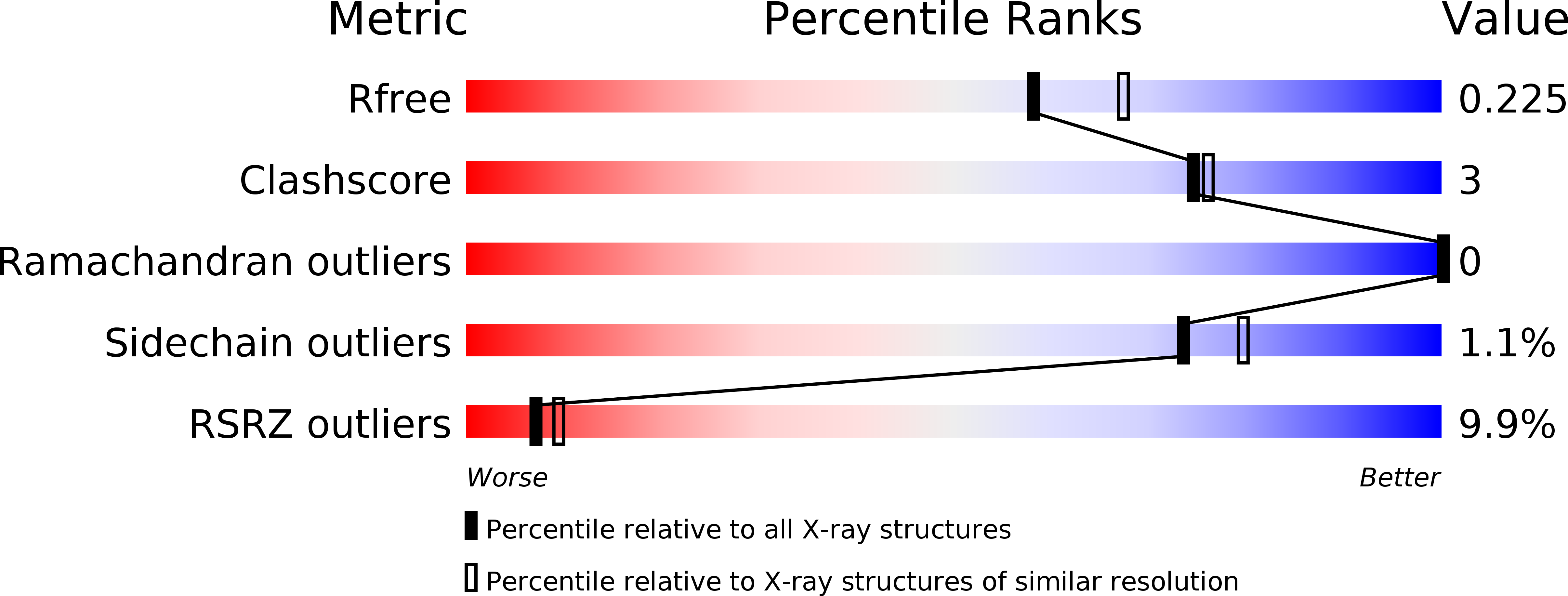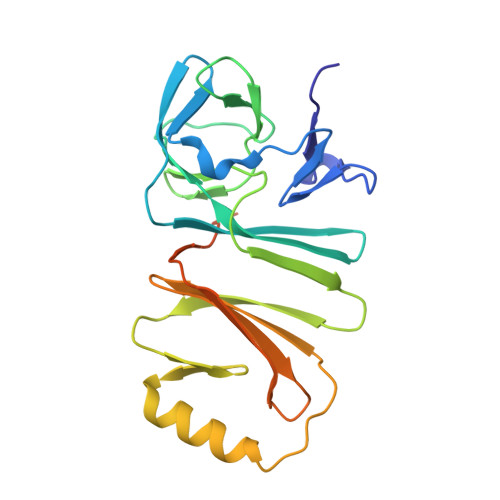Viral and metazoan poxins are cGAMP-specific nucleases that restrict cGAS-STING signalling.
Eaglesham, J.B., Pan, Y., Kupper, T.S., Kranzusch, P.J.(2019) Nature 566: 259-263
- PubMed: 30728498
- DOI: https://doi.org/10.1038/s41586-019-0928-6
- Primary Citation of Related Structures:
6EA6, 6EA8, 6EA9 - PubMed Abstract:
Cytosolic DNA triggers innate immune responses through the activation of cyclic GMP-AMP synthase (cGAS) and production of the cyclic dinucleotide second messenger 2',3'-cyclic GMP-AMP (cGAMP) 1-4 . 2',3'-cGAMP is a potent inducer of immune signalling; however, no intracellular nucleases are known to cleave 2',3'-cGAMP and prevent the activation of the receptor stimulator of interferon genes (STING) 5-7 . Here we develop a biochemical screen to analyse 24 mammalian viruses, and identify poxvirus immune nucleases (poxins) as a family of 2',3'-cGAMP-degrading enzymes. Poxins cleave 2',3'-cGAMP to restrict STING-dependent signalling and deletion of the poxin gene (B2R) attenuates vaccinia virus replication in vivo. Crystal structures of vaccinia virus poxin in pre- and post-reactive states define the mechanism of selective 2',3'-cGAMP degradation through metal-independent cleavage of the 3'-5' bond, converting 2',3'-cGAMP into linear Gp[2'-5']Ap[3']. Poxins are conserved in mammalian poxviruses. In addition, we identify functional poxin homologues in the genomes of moths and butterflies and the baculoviruses that infect these insects. Baculovirus and insect host poxin homologues retain selective 2',3'-cGAMP degradation activity, suggesting an ancient role for poxins in cGAS-STING regulation. Our results define poxins as a family of 2',3'-cGAMP-specific nucleases and demonstrate a mechanism for how viruses evade innate immunity.
Organizational Affiliation:
Department of Microbiology and Immunobiology, Harvard Medical School, Boston, MA, USA.















